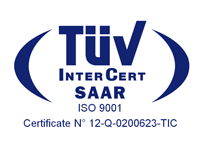With the final review meeting taking place on January 30th the HELMET project has reached the last milestone fulfilling its expectations. HELMET a High integrity EGNSS Layer for Multimodal Eco-friendly Transportation – funded by EU H2020 – EUSPA and coordinated by Radiolabs with partners ITC, University of Pardubice, DLR, SOGEI, and Roboauto has developed and demonstrated the capabilities of a 2-level Augmentation network for the ERTMS and Smart Road applications.
The key aspect of HELMET that it addresses is the performance of the GNSS augmentation systems included within HELMET and how HELMET combines these systems in real-time to meet the requirements of successively more demanding applications using three service levels. Service Level (SL) 1 combines the mature SBAS (as EGNOS) and Local Augmentation techniques, while Service Levels 2 and 3 add PPP-AR, RTK, and Network RTK techniques to provide decimetre and centimetre-level accuracy for the most demanding applications.
HELMET will be able to exploit multi-frequency, multi-constellation (e.g., GPS and Galileo) SBAS and Local Area Augmentation corrections, giving it enhanced performance and robustness compared to today’s single-frequency, GPS-only corrections. The multi-tier approach to GNSS augmentation applied within HELMET combines the benefits of existing and planned SBAS systems with two or more augmentation systems within a single service level.
With the conclusion of HELMET project and its demonstrations in a real operational environment, a roadmap to deliver augmentation service for the ERTMS and Smart Road applications is traced, benefitting of already available SBAS infrastructures and the incoming new standard (SC 134) for high integrity high accuracy receivers for rail and automotive applications.
HELMET will support the rollout of GNSS-based ERTMS applications, combining EGNOS and a Local augmentation network in a two-tier architecture to exploit the advantages of both systems. In particular, SBAS integrity information is used within Local Augmentation network to eliminate most of the potential integrity threat space before Local Augmentation network monitoring occurs, which greatly simplifies the latter and results in improved protection levels while using Local Augmentation corrections. This approach is scalable and extendable world-wide eventually reusing existing and available networks.


